Abstract
The ability of streptomycetes to produce hydrogen sulfide is generally used for taxonomic purposes. It was found that the previously used method, the blackening of Peptone Iron Agar, does not clearly indicate formation of hydrogen sulfide. It was shown that the blackening of a lead acetate strip is the most accurate indicator for H2S-producing streptomycetes. A great variety of organic and inorganic sulfur compounds were examined and compared, and the choice of the most suitable sulfur source and method for the detection of hydrogen sulfide is discussed.
Full text
PDF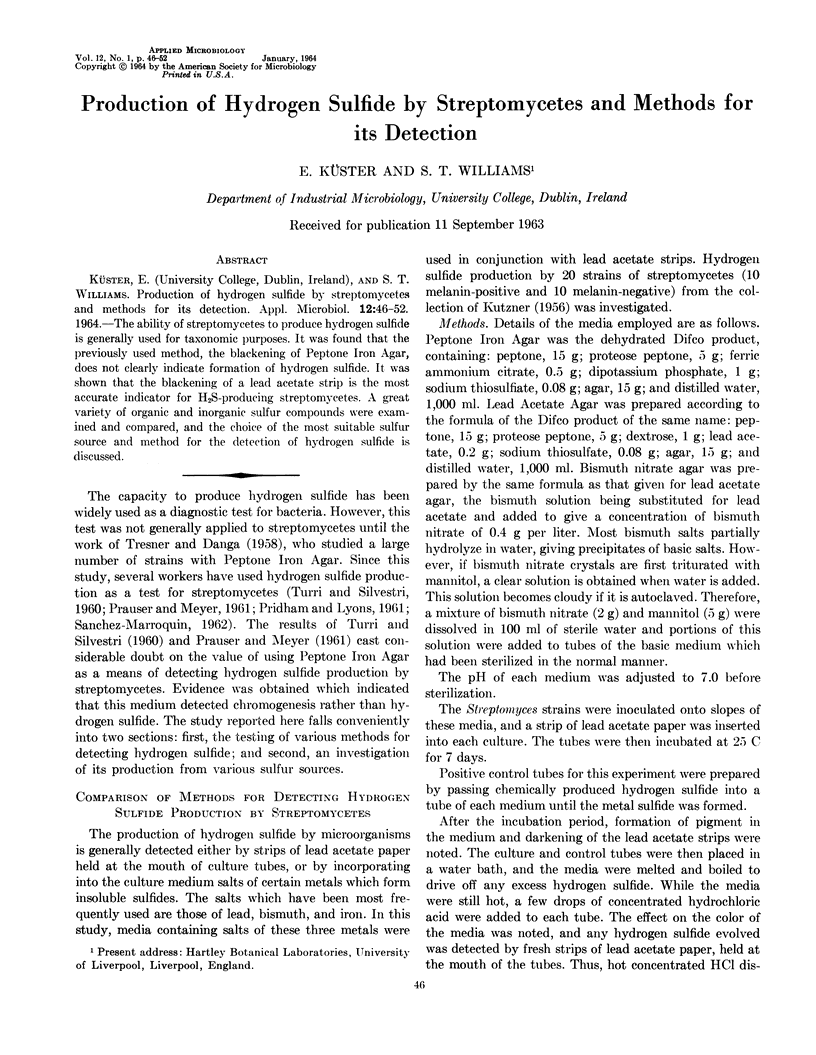
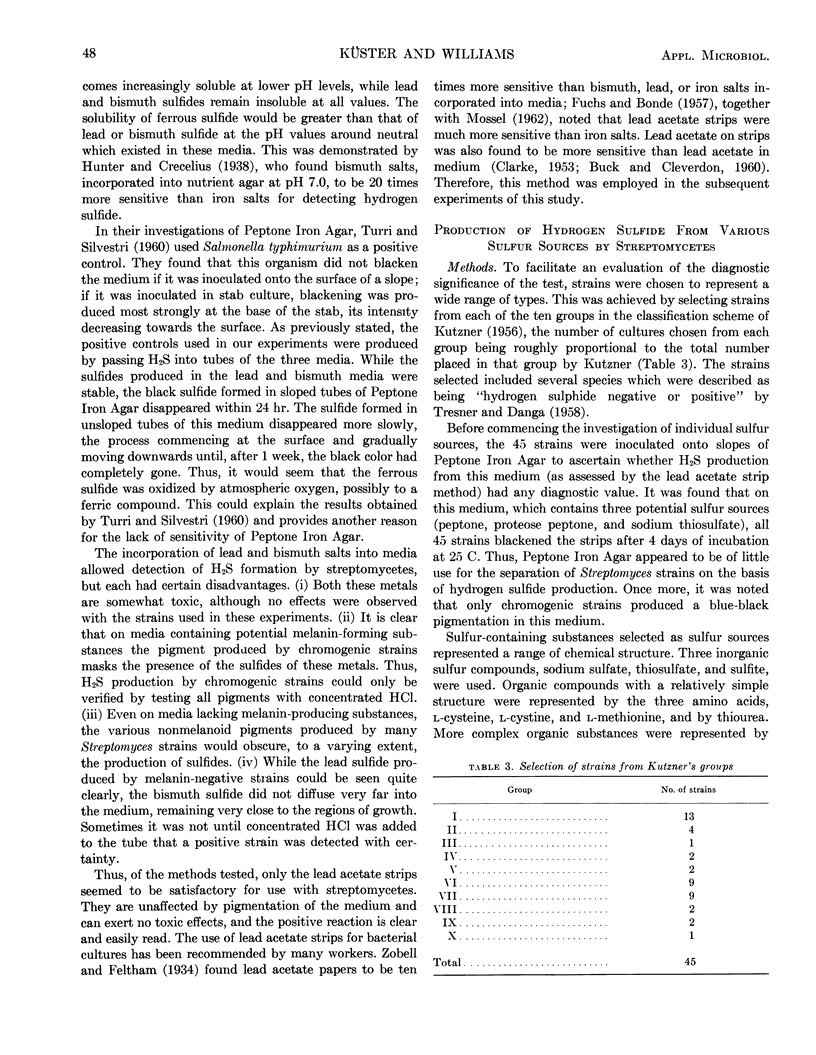
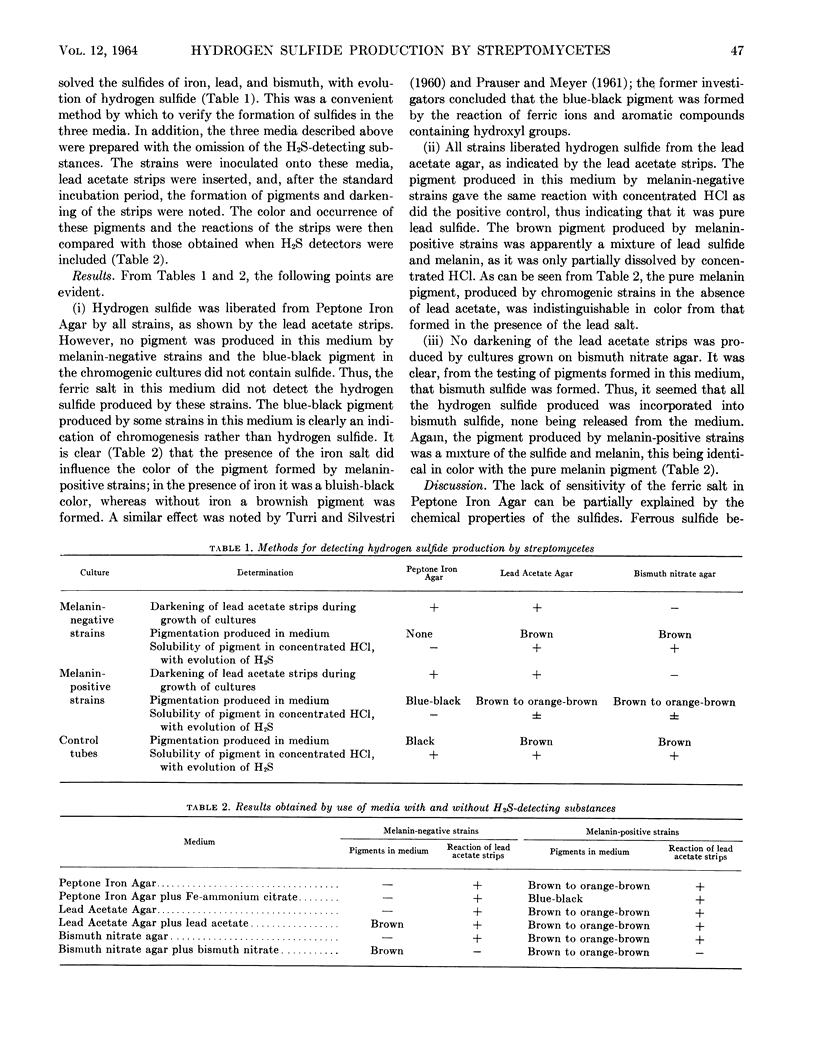
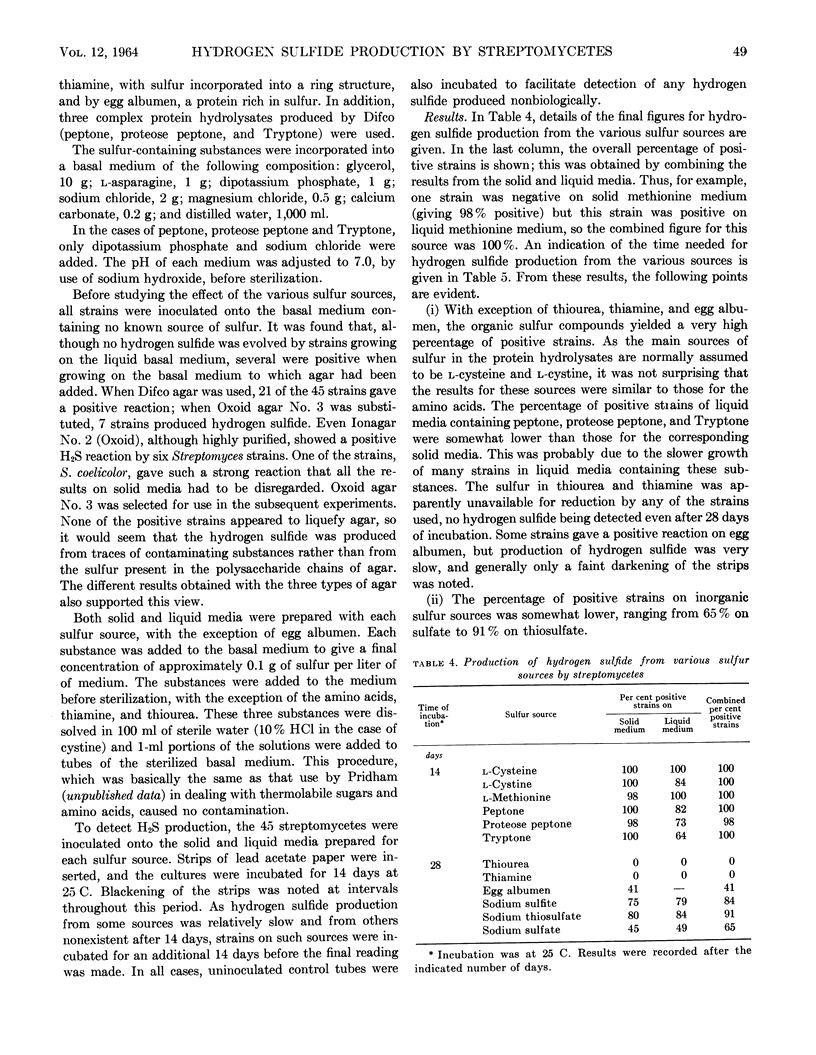
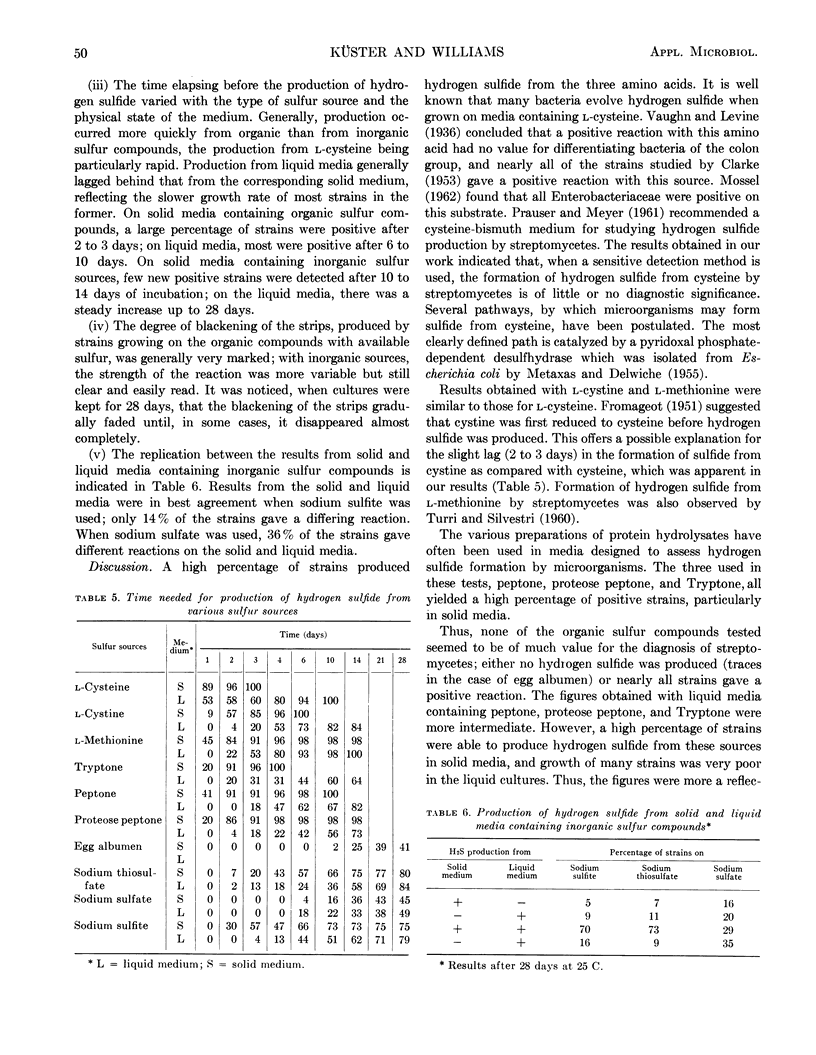
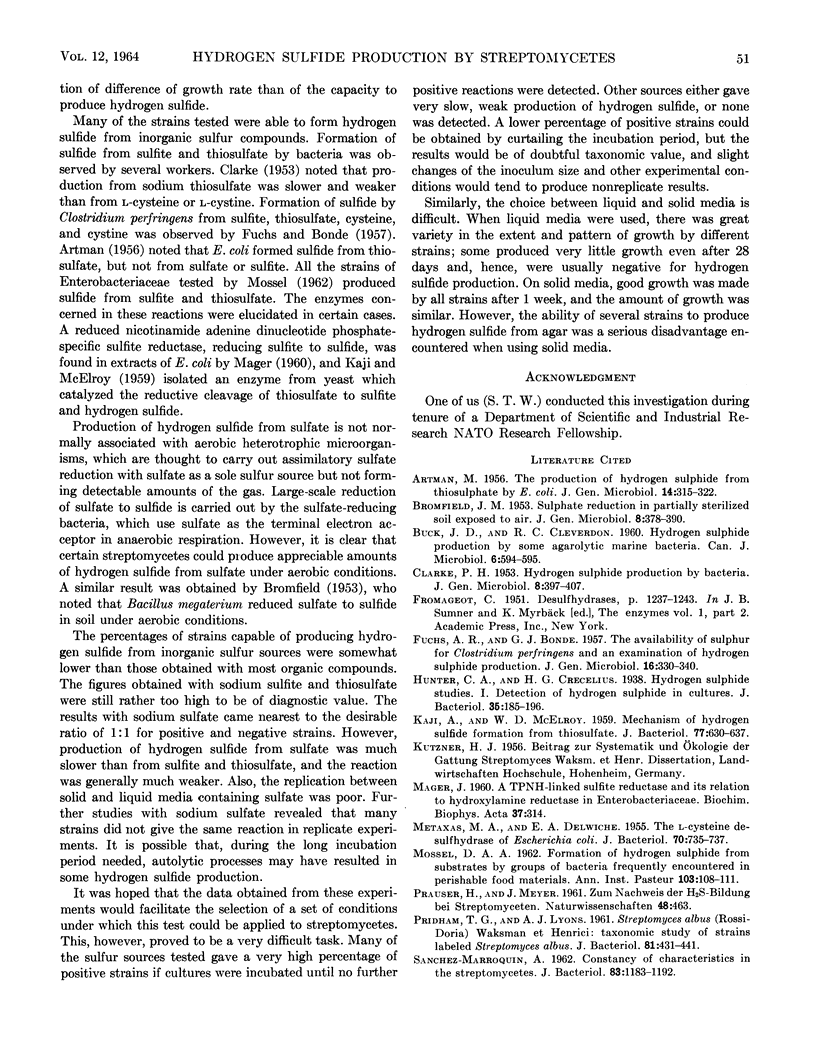

Selected References
These references are in PubMed. This may not be the complete list of references from this article.
- ARTMAN M. The production of hydrogen sulphide from thiosulphate by Escherichia coli. J Gen Microbiol. 1956 Apr;14(2):315–322. doi: 10.1099/00221287-14-2-315. [DOI] [PubMed] [Google Scholar]
- BROMFIELD S. M. Sulphate reduction in partially sterilized soil exposed to air. J Gen Microbiol. 1953 Jun;8(3):378–390. doi: 10.1099/00221287-8-3-378. [DOI] [PubMed] [Google Scholar]
- CLARKE P. H. Hydrogen sulphide production by bacteria. J Gen Microbiol. 1953 Jun;8(3):397–407. doi: 10.1099/00221287-8-3-397. [DOI] [PubMed] [Google Scholar]
- FUCHS A. R., BONDE G. J. The availability of sulphur for Clostridium perfringens and an examination of hydrogen sulphide production. J Gen Microbiol. 1957 Apr;16(2):330–340. doi: 10.1099/00221287-16-2-330. [DOI] [PubMed] [Google Scholar]
- Hunter C. A., Crecelius H. G. Hydrogen Sulphide Studies: I. Detection of Hydrogen Sulphide in Cultures. J Bacteriol. 1938 Feb;35(2):185–196. doi: 10.1128/jb.35.2.185-196.1938. [DOI] [PMC free article] [PubMed] [Google Scholar]
- KAJI A., McELROY W. D. Mechanism of hydrogen sulfide formation from thiosulfate. J Bacteriol. 1959 May;77(5):630–637. doi: 10.1128/jb.77.5.630-637.1959. [DOI] [PMC free article] [PubMed] [Google Scholar]
- MASSEY V. The identity of diaphorase and lipoyl dehydrogenase. Biochim Biophys Acta. 1960 Jan 15;37:314–322. doi: 10.1016/0006-3002(60)90239-0. [DOI] [PubMed] [Google Scholar]
- METAXAS M. A., DELWICHE E. A. The L-cysteine desulfhydrase of Escherichia coli. J Bacteriol. 1955 Dec;70(6):735–737. doi: 10.1128/jb.70.6.735-737.1955. [DOI] [PMC free article] [PubMed] [Google Scholar]
- MOSSEL D. A. [Formation of H2S from various substrates by some bacterial groups frequently encountered in perishable foodstuffs]. Ann Inst Pasteur (Paris) 1962 Jul;103:108–111. [PubMed] [Google Scholar]
- PRIDHAM T. G., LYONS A. J., Jr Streptomyces albus (Rossi-Doria) Waksman et Henrici: taxonomic study of strains labeled Streptomyces albus. J Bacteriol. 1961 Mar;81:431–441. doi: 10.1002/path.1700810216. [DOI] [PMC free article] [PubMed] [Google Scholar]
- SANCHEZ-MARROQUIN A. Constancy of characteristics in the streptomycetes. J Bacteriol. 1962 Jun;83:1183–1192. doi: 10.1128/jb.83.6.1183-1192.1962. [DOI] [PMC free article] [PubMed] [Google Scholar]
- TRESNER H. D., DANGA F. Hydrogen sulfide production by Streptomyces as a criterion for species differentiation. J Bacteriol. 1958 Sep;76(3):239–244. doi: 10.1128/jb.76.3.239-244.1958. [DOI] [PMC free article] [PubMed] [Google Scholar]
- Vaughn R., Levine M. Hydrogen Sulfide Production as a Differential Test in the Colon Group. J Bacteriol. 1936 Jul;32(1):65–73. doi: 10.1128/jb.32.1.65-73.1936. [DOI] [PMC free article] [PubMed] [Google Scholar]
- Zobell C. E., Feltham C. B. A Comparison of Lead, Bismuth, and Iron as Detectors of Hydrogen Sulphide Produced by Bacteria. J Bacteriol. 1934 Aug;28(2):169–176. doi: 10.1128/jb.28.2.169-176.1934. [DOI] [PMC free article] [PubMed] [Google Scholar]


